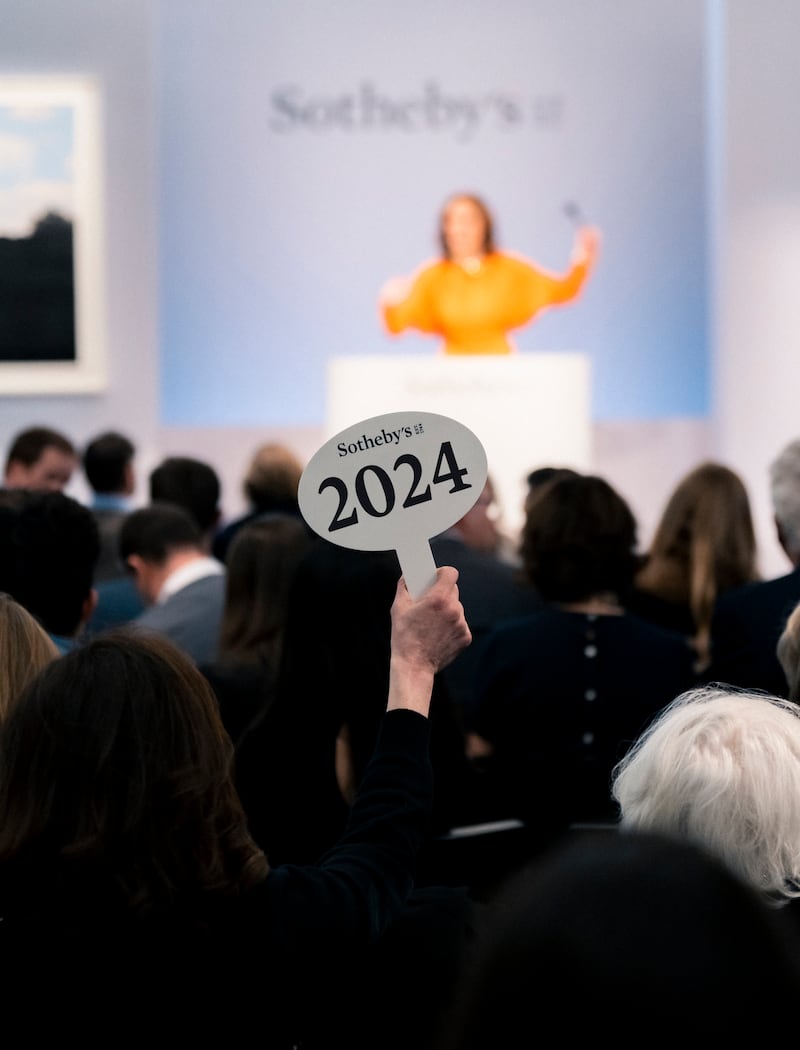There were quite a few murmurings last week regarding Sotheby’s announcement that the auction house is to slash its buyer fees. The company will also set its seller’s commission at a standard rate when new rates are introduced on May 20th.
The bombshell will have a considerable effect on an industry noted for quiet back room deals on commission rates and an opaque market in the fine art and luxury goods sector.
Having begun trading in 1979, Sotheby’s says it has “made the most significant changes to our fee structure in more than 40 years” on this new streamlined approach, which it says “sets a new industry standard”.
It also provides buyers with “increased spending power”, says Sebastian Fahey, managing director of global fine art, who goes on to say that the company has been considering these changes for a long time, based “on repeated feedback from buyers that fees are too high and from the sellers that the seller terms are, to an extent, opaque”.
READ MORE
The company says it expects this streamlined fee structure will also be a draw for collectors who are unfamiliar with buying at auction, as it makes it more accessible, with more clarity.
As it stands, Sotheby’s has a three-tiered buyers’ premium structure: fees up to a €1 million hammer price are charged at 26 per cent; at 20 per cent for up to €4.5 million, and then 13.9 per cent is added to the portion of the hammer price beyond these levels. This now changes to 20 per cent on all purchases of a hammer value up to €5 million, with anything above that charged at a flat 10 per cent.
An “overhead premium”, a 1 per cent administrative fee dealing with “overhead facility costs, property handling and other administrative expenses”, has also been scrapped.
While negotiable in the past, and variable on whether you were a dealer or not, sellers’ commission rates (per lot) have been changed to a new rate of 10 per cent on the first €500,000 of the hammer price, subject to a maximum of €50,000, with no commission on the hammer price above this. “This eliminates the complexity associated with varying rates” allowing “every client access to consistent and unambiguous pricing”, according to the auction house.
So there will be no sellers’ commission on consignments valued above $4.5 million (€4.17 million – low estimate). For higher values, on consignments with a total low estimate in excess of €18 million and up to €45 million, the seller will receive 40 per cent of the buyers’ premium, in addition to the hammer price (a standard enough practice within the trade).
If you’re lucky enough to be selling something valued at over €45 million, it’s a bespoke chat with Sotheby’s to work out the fees, while if the company fails to sell any lot with a low estimate of $5,000 or less, there will be a minimum €500 sellers’ commission.
The company is also adding what it calls a “new success fee” – a 2 per cent premium on any hammer price that exceeds its high estimate.
For lots that are guaranteed to achieve a certain price, a 4 per cent commitment fee is chargeable to the seller. There are generally two types of guarantee – in house or third party. In cases where no one bids for a lot, the auction house or a pre-committed party will purchase the item, so the seller is charged 4 per cent of the hammer price for this security.

Changes come into effect to consignments made after April 15th for sales occurring on or after May 20th, and new terms only apply to non-guaranteed sales. It will apply to all auctions excluding the sale of cars, property, wine and spirits.
So what does this mean for Ireland, Irish sales and sales of Irish art abroad?
As buyers’ premium has come down (6 per cent off premiums and 1 per cent overhead premium), and there’s no VAT in the UK chargeable to EU buyers, it will be cheaper to buy at auction than it currently is in the UK.
But this is for Sotheby’s only, and the bigger question is, will other international auction houses such as Christie’s and Bonhams follow suit? Their buyers’ premium rates start at 26 and 28 per cent respectively.
If a work is consigned outside the EU (eg from the UK), the buyer must pay import duty when they take the work home. This is 5.5 per cent if you buy based in France (such as the company’s Paris sale), but it’s 13.5 per cent on top of aggregate shipping and insurance fees to Ireland. This is a constant bugbear for Irish auction houses, as our duty rates are high in comparison to our nearest EU neighbours.
What Sotheby’s new rates have done is offer a sense of transparency in an industry notorious for cloak-and-dagger antics, though it remains to be seen how other world players will react.
- Sign up for push alerts and have the best news, analysis and comment delivered directly to your phone
- Find The Irish Times on WhatsApp and stay up to date
- Our In The News podcast is now published daily – Find the latest episode here













